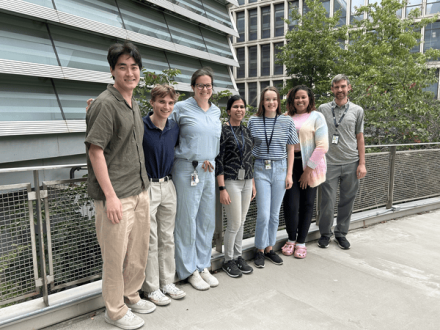
Cell Biology of Neurons, Muscle and Glia; Functional and Molecular Imaging; Integrative Neuroscience; Ion Channels, Transporters and Neurotransmitter Receptors; and Neurological Disorders
Dr. Mughal obtained her bachelor’s and master’s degrees in pharmacy from India. After receiving her Ph.D. in Pharmaceutical Sciences from North Dakota State University in 2018, she continued with her postdoctoral work at the University of Vermont in vascular and ion channel physiology. Her postdoctoral work was focused to evaluate mechanisms involved in regulation of blood flow in the brain. Dr. Mughal started her lab at the NIH in 2024. She is a Stadtman Tenure-track Investigator and Chief of the Neurovascular Research Unit in the Stroke branch of the National Institute of Neurological Disorders and Stroke. Her current joint appointment is sponsored by the National Institute of Neurological Disorders and Stroke, and the National Heart, Lung, and Blood Institute. Dr. Mughal leads the Neurovascular Research Unit.
Research Interests:
The Neurovascular Research Unit in part of the NINDS Stroke Branch. We are a basic science lab focused to examine different neurovascular coupling mechanisms in control of the blood flow in the brain.
We also examine functional deficits in molecular mechanisms in the small vessel diseases of the brain and Vascular Cognitive Impairment & Dementia (VCID) including Stroke and Alzheimer’s disease. We rely on functional imaging approaches (in-vivo and ex-vivo) and electrophysiology to answer scientific questions.
Our brain is a complex system. It represents a small ~2% of body mass and consumes ~20% of the body energy. The neurons in the brain have limited energy reserve and rely on the blood (vessels) to supply essential nutrients and removal of the metabolic waste(s). The communication between neurons and blood vessels is achieved through processes known as neurovascular coupling. These neurovascular coupling mechanisms get disrupted in the small vessel diseases of the brain, leading to an imbalance in energy supply and clearance of waste. However, we are still learning about the different neurovascular coupling mechanisms, let alone how they get disrupted in the disease states. The overarching goal of our research is to provide a thorough understanding about the neurovascular coupling mechanisms, how they regulate blood flow in the brain (from pial arteries to pial veins) and what goes wrong in the small vessel diseases of the brain. By contributing to this knowledge, we aim to help in improving the therapeutic strategies for treatment of Vascular Cognitive Impairment and Dementia (VCID) including Stroke and Alzheimer's disease (AD).
Lab Members
Current Members
- Adrian "Max" Eiden, Pharm.D. - Lab Manager
- Hwoi Chan Kwon, Ph.D. - Postdoc Fellow
- Amanda Roehrkasse, M.D., Ph.D. - Research Fellow
- Joshua Garfinkel, B.S. - Postbac Fellow
- Tiffany Byrd - Laboratory Technician
Lab Alumni
- Dr. Sabina Yeasmin (Postdoc, 2024-25)
- Joshua Li (Postbac, 2024-25)
- Vanshika Chaddha (Summer Student, 2024)

Join Our Lab
We are welcoming applications from Postdoctoral candidates, Graduate and Undergraduate students with background in Neuroscience, Physiology and related areas.
Should you have any questions, please e-mail Amreen Mughal, Ph.D.
Selected Publications
2025
Gottesman RF, Egle M, Groechel RC, Mughal A (2025)
Blood pressure and the brain: the conundrum of hypertension and dementia.
Cardiovasc Res, PubMed ID: 40084805
2024
Electrocalcium coupling in brain capillaries: Rapidly traveling electrical signals ignite local calcium signals.
Proc Natl Acad Sci U S A, 121:e2415047121. PubMed ID: 39661063
2023
The post-arteriole transitional zone: a specialized capillary region that regulates blood flow within the CNS microvasculature.
J Physiol, 601:889-901. PubMed ID: 36751860
2022
Adenosine signaling activates ATP-sensitive K+ channels in endothelial cells and pericytes in CNS capillaries.
Sci Signal, 15:eabl5405. PubMed ID: 35349300
2021
Local IP3 receptor-mediated Ca2+ signals compound to direct blood flow in brain capillaries.
Sci Adv, 7 PubMed ID: 34290098
* Equal contribution as the First authors.
For a full list of publications, please visit PubMed.
